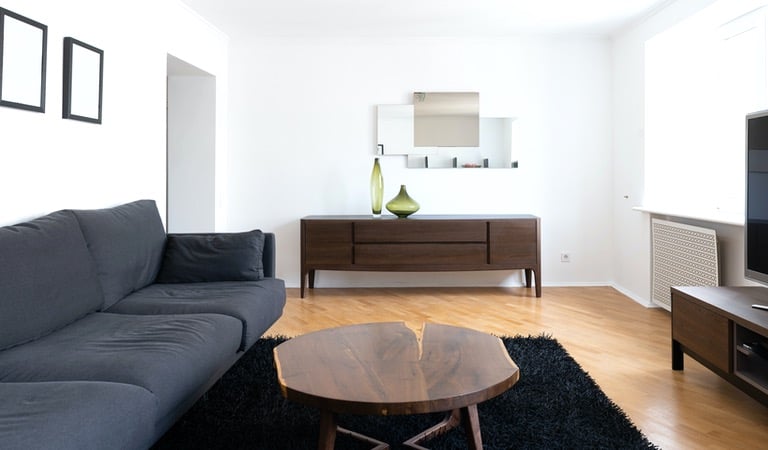In order to be successful, a business must first identify who their ideal customer would be. So as a property investor and landlord, you need to recognise and identify the types of tenants that would be attracted to the varying types of properties, before taking the plunge and investing in your new buy-to-let business.
There are three main different tenant types, which are predominantly categorised for insurance and mortgage purposes, as each type of tenant is associated with a different level of risk. They are Working Professionals, Department of Social Security (DSS) and Students.
Within each category there are a number of other factors which you will have to consider, such as, what is their age range? Are they married, single or have a partner? Do they have children or dependants? How much do they earn? How are they likely to spend their free time?
All of these factors should be considered before investing in a buy-to-let property so that you can select, and if necessary, adapt the property to suit the type of tenant that you would like to accommodate.
It is also worth considering other reasons as to why you believe the tenant will be renting a property from you. For example, are they wanting to rent whilst they save a deposit to buy their own property? Are they new to the area and are perhaps wanting to get a feel for the town or city before deciding to purchase their own property?
Both of these scenarios would suggest that they will likely be short to mid term tenants over a period of say 6 months to 5 years.
And let’s not forget that there are people who simply don’t want to buy their own property. Perhaps they don’t want to feel burdened by a huge loan, or perhaps they don’t want to have to deal with all the maintenance issues that come with owning a property. There is a possibility that these types of tenants will want to stay for the longer term, exceeding 5 years, providing their landlord delivers a good service of course.
Now that I have given you a general overview of the different types of tenants, I would like to go into a bit more detail. There are a number of factors that you should take into consideration which will affect your buying decisions whilst you shop for your new buy-to-let investment.
Remember, successful business’s take the time to identify their ideal customer, to better serve them and to maximise their profits.
Contents
Types And Size Of Properties Typically Suited For Each Tenant Type
The table below gives a general overview of the types of properties that would be suited to each type of tenant. I have not included bungalows as they are not as common on the rental market in my experience, although I would place them in the same category as a house.
A house of multiple occupation (HMO) is a property that is let on a ‘per room’ basis. I have written an article here if you would like to learn more about the requirements and regulations which govern properties of multiple occupation.
| Tenant Type | 1-2 Bed Apartment/Flat | 3+Bed Apartment/Flat | 1-2 Bed House | 3+ Bed House | HMO (5+Bed) |
| Working Professional | x | x | x | ||
| Working Professional with Family | x | x | |||
| DSS | x | x | |||
| DSS with Family | x | x | x | x | |
| Student | x | x |
The purpose of this table is to simply give you an idea of the type of tenant you should work towards catering to, depending on your budget and affordability when investing in a buy-to-let property.
The location of the property will also be important, as it will effect both the purchase price and the appeal of potential tenants.
The other factor you will need to consider is whether you would prefer to let a property furnished, part furnished or unfurnished.
A furnished or part furnished property will require higher set-up costs, and there is potentially less chance that the tenants will want to stay long term. But, the location of the property and the rental market needs will determine the demand.

Considerations For Working Professional Tenants
Working Professionals is a term used for anyone who is in full time employment. Mortgage lenders and insurance companies consider these tenants to be low risk compared to other types of tenants, as they have a regular income and there is less chance of them falling behind with rent payments.
There will always be working professionals who are looking for fully furnished properties, and others that are looking for part furnished or unfurnished properties. Tenants who are looking to rent long term will often prefer an unfurnished property so they can make it their own from day one, so to speak.
There are many young working professionals who are single and look to rent single rooms within HMO properties. This provides cheap accommodation which allows them to save a deposit for their first property whilst living independently, if that is their intentions.
Working Professionals seeking accommodation in HMO properties will certainly be wanting accommodation which is fully furnished.
Considerations For Student Tenants
As students do not have a full time income, and may only have a part time income, they are considered more of a risk compared to working professionals.
In my experience of letting to students for more than 15 years, I have always received the rent on time. Students receive grants and loans for their university studies and as they are typically too young to have a credit history, they are required to provide a guarantor on the Assured Shorthold Tenancy (AST) agreement, who will ultimately be responsible for paying the rent if the student doesn’t.
They are more likely to rent a room rather than a whole property although it is common for groups of students to rent a property together under one AST agreement. They then divide the rental payment between themselves knowing that they are all reasonable. If one student fails to pay the rent, all the students could be at risk of being evicted.
Student properties need to be fully furnished with the addition of a desk and office chair for each tenant to enable them to carryout their studies comfortably. So the set-up costs can be more than a typical fully furnished property, but the rental income on a per room basis will be far greater than letting the same property as a single unit.
Considerations For Department Of Social Security (DSS) Tenants
DSS is the term used for tenants who are claiming benefits to pay their rent. In recent years, mortgage lenders have been criticised for the way in which they have assessed their risk criteria for DSS tenants, and there are now more lenders than ever before who cater towards this tenant type.
Similar to working professionals, there will be some prospective tenants who are searching for both furnished and unfurnished rental properties. So it would be worthwhile talking to a reputable letting agent in the area to seek advice on the current demand before purchasing the property, so you can make an informed decision beforehand.
Whether the tenant is in receipt of housing benefit or the new universal credit, it is possible for the rent to be paid directly to the landlord at the tenants request. The rates for the Local Housing Allowance is different for each area and you can search for the current rates here.
Landlord Responsibilities Regarding Tenant Types
It’s imperative that both the mortgage lender and insurance company are aware of the tenant type that is being accommodated in your buy-to-let rental property.
If you are considering letting your property to a different tenant type at the end of a tenancy agreement, you should contact your mortgage lender and notify your insurance company of your proposed changes beforehand.
Any errors, mistakes or by deliberately misinforming your lender or insurance company about the position of your tenants, would be a breach of your mortgage terms and conditions and could invalidate your insurance cover.

